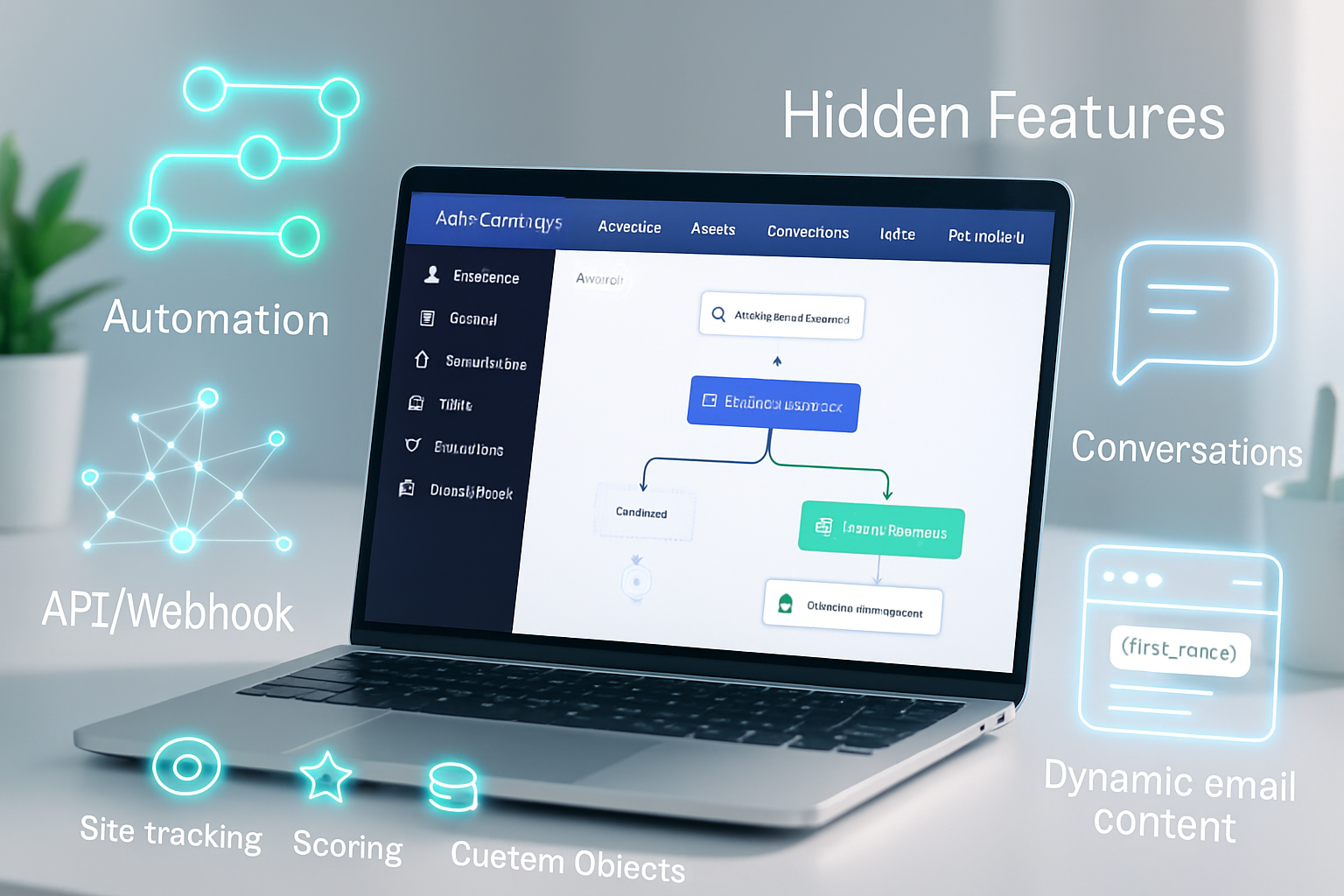· marketing · 6 min read
The Hidden Costs of Over-Automation: When Zapier Can Hurt Your Business
Automation can save time - until it doesn't. This deep dive uncovers the hidden operational, financial, and customer-experience costs of over-automating with Zapier, illustrated with real cautionary interview excerpts and a practical framework to prevent automation from becoming a liability.

Outcome first: if you want automation that scales, saves money, and improves customer experience - this article will help you spot where it’s already costing you, reduce the damage, and rebuild automation that’s resilient and aligned with business goals.
Automation sells itself. It promises fewer manual steps, faster responses, and a sleek stack that just works. But when you lean on tools like Zapier without guardrails, the very efficiencies you sought can turn into fragile, costly liabilities.
Below you’ll find the core pitfalls of over-automation, candid interview excerpts from practitioners who lived through the problems, a practical diagnostic checklist, and a decision framework you can apply today.
What “over-automation” really means
Over-automation is when automation is put in place without sufficient consideration for:
- Long-term maintenance and ownership.
- Error handling, monitoring, and rollback options.
- The human decisions that still need context or nuance.
- The multiplicative complexity added by chaining many simple automations.
The result is not simply a broken Zap. It is a system where small changes cascade, customers get poor experiences, and your team spends more time firefighting than building.
The hidden costs - beyond the sticker price
- Operational fragility
Automations built as brittle, linear zaps break when upstream data changes. The symptom: sudden failure spikes. The cost: time spent diagnosing, patching, and re-testing.
- Increased support and customer-impact costs
A misrouted email or duplicated invoice may seem small. But multiply that out by thousands of customers and manual fixes become expensive. Worse: trust erodes.
- Technical and process debt
Quick automations accumulate into a tangled web that few understand. That’s process debt - it slows onboarding, impedes changes, and increases risk during staff turnover. See Martin Fowler’s thinking on technical debt for how short-term wins become long-term costs.
- Compliance and security blind spots
Automations that move personal or financial data can create compliance gaps if data flows aren’t tracked and controlled. You might automate a GDPR-influenced workflow and never log who saw what, or why a record was deleted.
- Hidden costs in monitoring and recovery
Automation reduces repetitive work, but someone still needs to watch for failures, alert, and recover. Without that function, failures become incidents that cost far more than the manual work they replaced.
- Opportunity cost and false optimization
Automating the wrong thing gives the illusion of progress while the biggest bottlenecks remain manually solved. You optimize for speed rather than impact.
Real cautionary tales (interviews)
Note: Interviewees asked to remain anonymous. Their stories are representative of common patterns we see across SMEs and mid-market companies.
Interview - Operations lead, fintech (requested anonymity)
“We automated our loan intake flow with a series of zaps. At first it was amazing - manual work dropped 70%. Then one field name changed in the intake form. No one noticed. For three days, loans were marked for the wrong queue. Customers called, and our CS team had no context. We spent an entire week rolling back and rebuilding. The week of lost revenue and reputational damage was far worse than the time we saved on manual entries.”
Interview - Head of Customer Support, e-commerce brand (requested anonymity)
“We had a zap that created tickets for certain returns. It duplicated around 15% of cases when customers used a slightly different SKU pattern. Support staff were frustrated; customers got duplicate emails. Fixing the root cause required actually tracing data flows across five apps - something we couldn’t do because the automation map didn’t exist. We learned the hard way that visibility is as important as automation.”
Interview - CTO, B2B SaaS (requested anonymity)
“I used to think automation was purely a developer-time-saver. Then we hit a compliance audit and discovered backup logs didn’t capture the source of several automated changes. The result: long audit cycles and extra consulting fees. We had to reintroduce checkpoints and add deterministic logging to every automation. It was painful - but necessary.”
Diagnosis: is your Zapier setup hurting you?
Run this quick internal audit. If any answer is “no” or “I don’t know,” you have risk to address.
- Ownership - Does each automation have a documented owner and clear SLA for fixes?
- Visibility - Do you have a living map of automations and data flows between systems?
- Error handling - Do automations fail safely with alerts and rollback where appropriate?
- Monitoring - Are failures logged centrally with dashboards and alert thresholds?
- Testing - Are automations tested when upstream systems or schemas change?
- Security & compliance - Are data movements audited and access controlled?
- Human-in-the-loop - Are critical decisions gated with human review where context matters?
If you answered “no” to several, prioritize the ones affecting customer experience and compliance first.
A practical framework to prevent automation from becoming a liability
- Classify automations by risk and value
- High value / High risk - require strict testing, approvals, monitoring, and human-in-the-loop.
- High value / Low risk - can be automated but still need monitoring and rollback.
- Low value / High risk - avoid unless a clear mitigation exists.
- Design for failure
Assume an automation will fail. Build meaningful alerts, safe defaults (don’t auto-delete or auto-charge without reconfirmation), and rewind procedures.
- Centralize mapping and documentation
Keep a single source of truth for all automations: owner, inputs, outputs, failure modes, and last test date. Treat it as product documentation.
- Add human checkpoints where context is critical
Customer-facing judgments often need a human review. Use automation to surface work and reduce steps - not replace judgment entirely.
- Monitor end-to-end outcomes, not just execution success
A zap can run successfully and still produce wrong outcomes because of bad data. Monitor business KPIs (refund rate, duplicate tickets, time to resolution) as part of automation health.
- Limit chaining and branching complexity
Many small automations linked in series are harder to debug than a single, well-designed workflow. Where complexity is needed, consider moving the logic into a single, version-controlled function or an internal microservice.
- Routine auditing and rotate owners
Schedule quarterly audits of automations and rotate ownership or require sign-off after significant changes.
Quick playbook - actionable steps to take this week
- Identify the top 10 zaps by business impact (revenue, CS volume, legal exposure).
- For each, confirm owner, monitoring, and rollback procedure.
- Add an automated, centralized log for all automation failures (even simple emails to a channel are better than nothing).
- Add one human-in-the-loop checkpoint to a customer-facing automation that currently runs without review.
- Create an automation map and store it in a shared place (Confluence, Notion, or a simple shared doc).
When to move off Zapier and invest in a more robust platform
Zapier is great for rapid experimentation and small-to-medium automations. But there are times when the right choice is to centralize automation logic into a platform that supports:
- Versioning and code reviews.
- Stronger testing and staging environments.
- Role-based access control and audit trails.
- More deterministic error handling and retries.
If you’re seeing frequent schema changes, compliance pressure, high incident costs, or a huge number of chained zaps, treat that as a signal to evaluate a sturdier integration platform or an internal service.
References and further reading
- Zapier’s guidance on common automation mistakes: https://zapier.com/blog/automation-mistakes/
- Martin Fowler on technical debt: https://martinfowler.com/bliki/TechnicalDebt.html
- MIT Sloan / management thinking on the darker consequences of automation (see related literature on automation risks): https://sloanreview.mit.edu/
Final takeaway
Automation should be liberating - not a growing set of unseen liabilities. Automate with ownership, visibility, and humility. Start small, instrument everything, and design for failure. If you do that, Zapier and similar tools will be the accelerant they were meant to be - not the slow-burning cost center that takes you by surprise.



